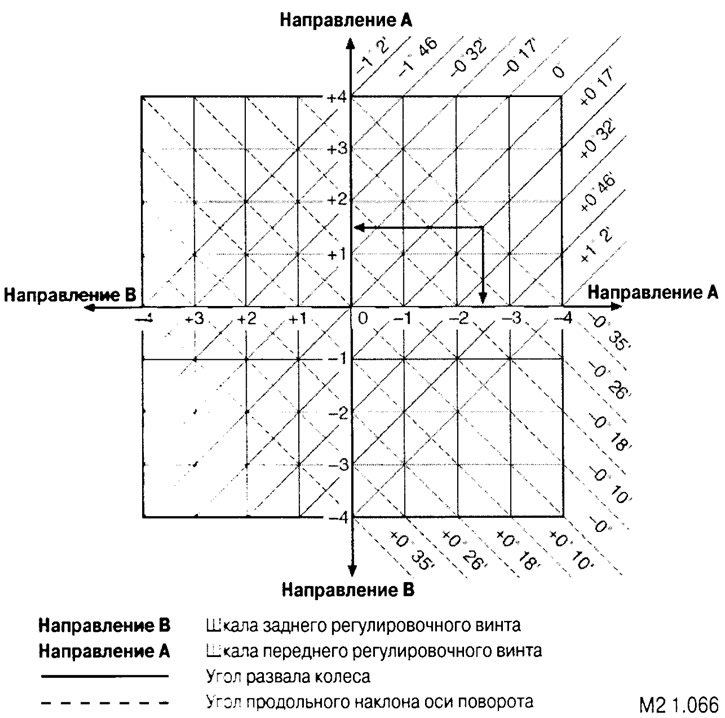Tire wear monitoring
Check the wheel tires for even wear. The presence of uneven wear may be due to a malfunction of the steering rods, improper adjustment of the wheel alignment angles, in particular, toe-in of the front wheels.
Wheel alignment
With the correct adjustment of the toe-in of the wheels, the distance difference (A and B), measured along the longitudinal planes of tire symmetry (on the tread surface), should be within 0-5 mm, which corresponds to a toe angle of 0°00'-0°12' in terms of one wheel.
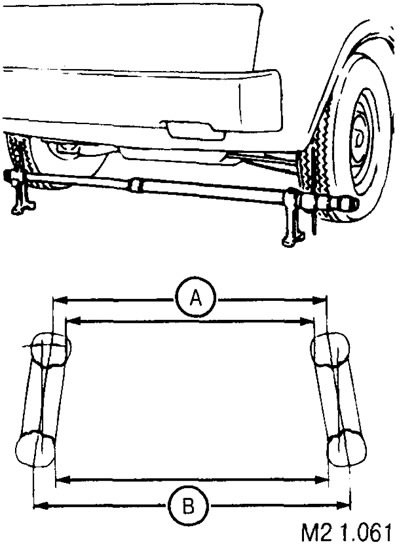
The toe-in angle is adjusted by changing the length of the steering rods at the place of the threaded connection of the steering rod ends with the steering rods themselves.
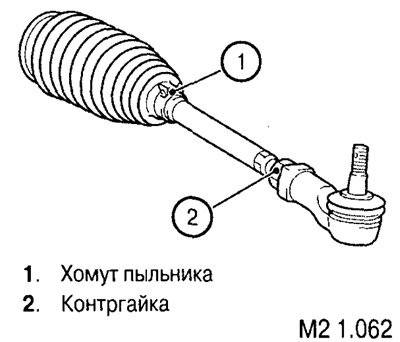
Tie rod locknut tightening torque: 93 Nm.
Checking wheel angles
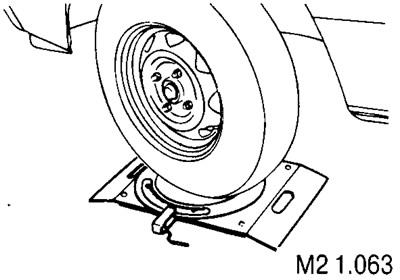
| inner wheel (e.g. right when turning wheels to the right) | 36°50' ± 2°00' |
| Outer wheel (left when turning wheels to the right) | 32°40’ |
Angles of camber of wheels, angles of longitudinal inclination of the axes of rotation of wheels, angles of transverse inclination of the axes of rotation of wheels
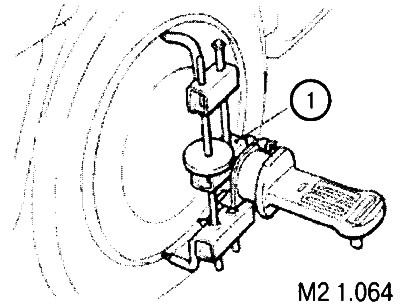
Standard wheel alignment values
| Camber angle | 0°00’±0°30’ 1*) |
| The angle of the longitudinal inclination of the axes of rotation of the wheels | 3°48' ± 1°00' 1*) |
| The angle of the transverse inclination of the axes of rotation of the wheels | 12°45' |
1*) The angle difference for the left and right wheels should be no more than 30'.
Wheel alignment
The camber angle of the front wheel is adjusted by turning the eccentric adjusting screw that secures the lower suspension arm to the body.
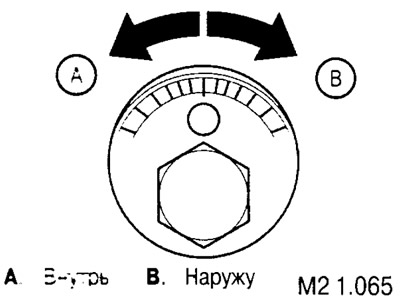
Nomogram for determining control actions
How to use the nomogram?
Example: if the camber deviation from the standard value is 0°35' and the pitch angle deviation is 0°17', then the front eccentric bolt should be turned 1.5 stops and the rear 2.5 stops in the opposite direction.
